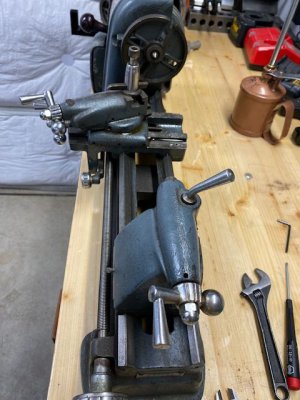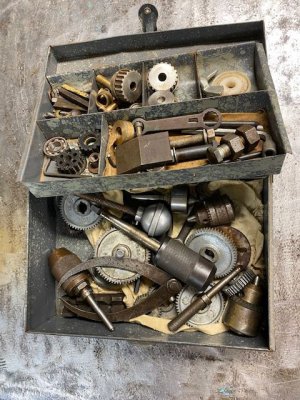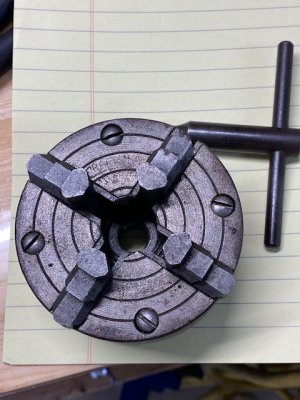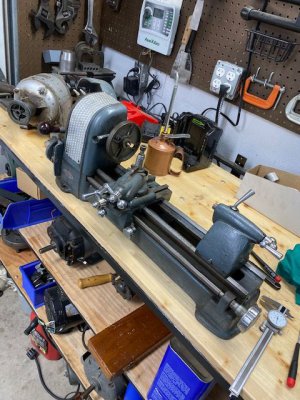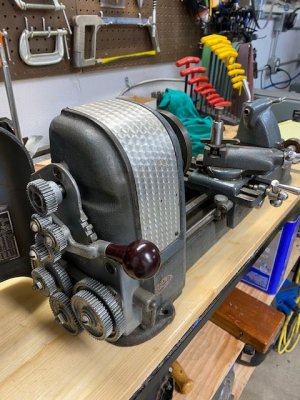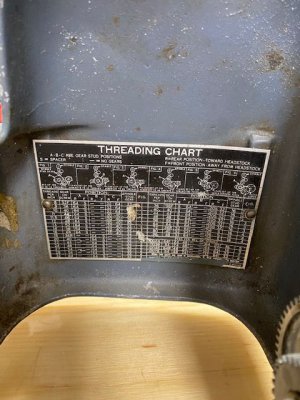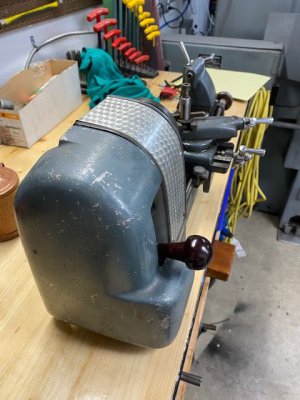- Joined
- Mar 26, 2018
- Messages
- 8,407
As promised, here is my 109-20630. These were made between 1940 and 1949 according to one source. They may have been made earlier as Projectnut mentioned. I just don't know.
I broke the 4 jaw down this morning to clean and inspect. It's cast iron. The threads are broken out about half way. It's junk. Dang it.
I have 3 face plates and I really don't want to spend any money on this.
This lathe is a gift from a generous forum member.
I do have a 3 jaw 3" Bison I could mount on one of these face plates. A 4 jaw is a must.
I'll see how the lathe runs before I go through the trouble.
I need to make up a way of mounting the lathe and motor to this bench.
I broke the 4 jaw down this morning to clean and inspect. It's cast iron. The threads are broken out about half way. It's junk. Dang it.
I have 3 face plates and I really don't want to spend any money on this.
This lathe is a gift from a generous forum member.
I do have a 3 jaw 3" Bison I could mount on one of these face plates. A 4 jaw is a must.
I'll see how the lathe runs before I go through the trouble.
I need to make up a way of mounting the lathe and motor to this bench.


